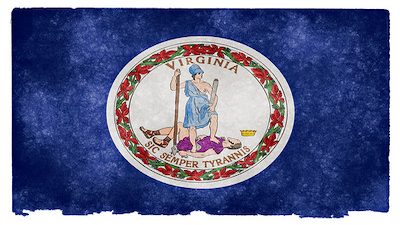In a recent episode of the Money Metals podcast, host Mike Maharrey interviews economist Judy Shelton, a prominent advocate for returning to the gold standard and a former economic advisor to President Trump.
Shelton, who has a new book, Good as Gold: How to Unleash the Power of Sound Money, shares her views on how a stable currency backed by gold can restore financial integrity in the United States.
(Interview Begins Around 6:50 Mark)
Who is Judy Shelton?
Judy Shelton
Judy Shelton (Judy Lynn Shelton) is an American economist known for her advocacy of the gold standard and her criticism of the Federal Reserve. Born in Los Angeles, California, and raised in the San Fernando Valley, she earned her Bachelor’s degree in business from Portland State University and went on to earn her MBA and PhD in business administration from the University of Utah.
Shelton has held prominent roles in both the public and private sectors. She was a senior fellow at the Independent Institute and worked with the Hoover Institution. Notably, she served as an economic advisor to President Donald Trump and was nominated by him to the Federal Reserve Board in 2019, although her nomination was ultimately unsuccessful in the Senate. Shelton was also appointed as the U.S. director for the European Bank for Reconstruction and Development in 2018.
An outspoken proponent of “sound money,” Shelton argues for a stable currency backed by gold rather than the current fiat system. She’s known for her stance against the Fed’s 2% inflation target, which she sees as a gradual reduction of purchasing power. Her views are considered controversial by many in mainstream economics, and she has frequently highlighted the benefits of returning to a gold standard, suggesting it would curb inflation and restrict government spending.
Shelton is also the author of several books, including Money Meltdown, The Coming Soviet Crash, and Good as Gold: How to Unleash the Power of Sound Money. Through her writings and public statements, she advocates for sound monetary policies and fiscal discipline, often challenging conventional economic perspectives on currency and government finance.
Why Gold Matters in a Modern Economy
Despite the dominance of Keynesian economics today, Shelton argues that gold-backed monetary systems have historically provided stability. Citing former Federal Reserve Chair Alan Greenspan and Nobel laureate Robert Mundell as influences, Shelton emphasizes that gold remains a key asset for central banks globally. This is a signal, she says, that gold is a trusted measure of value even today.
“Gold provides a level of monetary credibility that fiat currencies do not,” Shelton notes, criticizing the Federal Reserve’s current inflation-targeting policy.
The Federal Reserve’s 2% Inflation Target: A “Gimmick” on Purchasing Power
A primary criticism Shelton raises is the Federal Reserve’s inflation target of 2% per year. She argues this policy effectively erodes the dollar’s purchasing power, gradually costing Americans 2% of their wealth annually.
Historically, Shelton says, Congress’s mandate for “stable prices” aimed for 0% inflation, not 2%. She explains that the current policy undermines the dollar’s reliability as a store of value, while unfairly benefiting government finances over citizens.
“People should be upset about this,” Shelton asserts, calling the Fed’s policy a clear “expropriation of private property.”
How Fiat Currency Fuels Big Government Spending
Shelton believes that the fiat currency system enables excessive government spending. By auctioning debt at high interest rates, the government can continue deficit spending, regardless of mounting costs. She points out that debt financing costs now rival major budget items, such as defense, and are only projected to grow.
In Shelton’s view, fiscal accountability is impossible without sound money. High interest rates, while restrictive for private businesses, are manageable for government spending. The result, she warns, is that the fiat system props up big government, creating an unfair playing field between public and private sectors.
A Gold-Backed Solution: Treasury Trust Bonds
Shelton proposes a practical first step towards monetary reform: issuing “Treasury Trust Bonds” backed by the U.S. gold reserves. With the U.S. holding 261 million ounces of gold worth over $700 billion, Shelton suggests leveraging these assets to issue 50-year bonds, maturing in 2076. Such bonds would signal the U.S. government’s commitment to restoring fiscal and monetary discipline.
These bonds, she argues, would provide a useful benchmark for the Federal Reserve by showing the public’s expectations for dollar stability. She compares this to Treasury Inflation-Protected Securities (TIPS), which are tied to the Consumer Price Index but suggests that a gold-based metric could offer a more stable, real-world benchmark.
State-Level Movements for Sound Money
Shelton also praises efforts by organizations like Money Metals Exchange and the Sound Money Defense League, which are working with states to remove sales taxes on precious metals and recognize gold and silver as legal tender – as noted by the Sound Money Index.
She highlights Texas’s bullion depository as an example of how states are advancing sound money initiatives and sees such measures as foundational for a return to monetary stability.
“We’re seeing a real push at the state level toward sound money, and I think these movements are crucial for raising public awareness,” Shelton says.
The Moral Responsibility of Sound Money
Shelton frames sound money as a moral obligation, stating that the U.S. government, which requires citizens to use the dollar, has a duty to ensure its value remains stable. The alternative, she contends, is unfair tax treatment of gold as a monetary asset. She advocates for ending this inequity to allow Americans to protect their wealth in a system that honors financial integrity.
A Call for National Debate on Monetary Reform
As Shelton continues her advocacy through her work at the Independent Institute and her book, Good as Gold, she hopes to inspire broader discussions and policy actions to reform the U.S. monetary system.
Shelton and Maharrey conclude that a national debate on monetary reform is essential for building a fiscally stable future.
By focusing on the fundamentals of sound money and making a practical case for a gold-backed bond, Shelton offers a roadmap for restoring monetary integrity in the U.S.—one actionable step at a time.
Key Questions & Answers

Here are the key questions and answers from Judy Shelton’s interview on the Money Metals podcast:
What’s wrong with the current monetary system?
Shelton believes the Federal Reserve has compromised the primary functions of money by treating it as a government tool, rather than a stable unit for measuring value in a free market. The Fed’s 2% inflation target effectively reduces purchasing power, making the dollar an unreliable store of value. Shelton calls for restoring monetary integrity by making the dollar a dependable unit across borders, a fundamental purpose the Fed has abandoned.
Why advocate for a return to the gold standard?
Shelton sees gold as a long-trusted store of value and cites historical monetary systems backed by gold, like the classical gold standard and the Bretton Woods system, as models for economic stability and growth. Unlike fiat currency, gold-backed systems resist arbitrary manipulation, offering a check on government spending. She believes that a gold-linked system could improve the dollar’s credibility.
Why is the Federal Reserve’s 2% inflation target problematic?
Shelton argues the 2% target is a “gimmick” that gradually reduces Americans’ purchasing power. She points out that former Fed chair Paul Volcker and other monetary experts favored a 0% inflation target as consistent with price stability. Shelton describes the Fed’s approach as a subtle form of wealth expropriation that goes against the Fed’s original mandate for stable prices.
Does fiat currency benefit the government over citizens?
Yes, Shelton asserts that fiat currency enables big government spending because high interest rates deter private-sector borrowing but don’t stop government deficit spending. The government simply raises funds through debt auctions, disregarding debt’s mounting costs. This dynamic, Shelton warns, fuels government expansion and undermines fiscal accountability.
What is the Treasury Trust Bond proposal?
Shelton suggests issuing “Treasury Trust Bonds” backed by U.S. gold reserves to symbolize a commitment to sound money. These bonds would mature in 50 years, offering a practical way for the U.S. to signal its fiscal responsibility. By linking these bonds to gold, Shelton believes they could serve as a benchmark for dollar stability and help align the Federal Reserve’s policies with public expectations for long-term value preservation.
Are there significant state-level sound money movements?
Yes, Shelton commends efforts by groups like the Sound Money Defense League to remove sales taxes on precious metals and declare gold and silver legal tender in states. She mentions Texas’s bullion depository as a leading example and supports states’ initiatives to push for sound money policies, seeing them as essential steps toward broader monetary reform.
Why is sound money a moral obligation?
Since the government requires citizens to use the dollar as legal tender, Shelton argues it has a moral duty to maintain the dollar’s stability. She believes that taxing gold and silver holdings as monetary assets is inequitable, especially given gold’s historical role as a store of value, and calls for reforms to align the dollar’s value with sound money principles.
How can people access Judy Shelton’s work?
Shelton’s work is available through the Independent Institute, and her book Good as Gold can be found in major retailers like Amazon, where it is currently popular in the categories of monetary policy, economic theory, and economic policy development.
Read the full article here












Leave a Reply